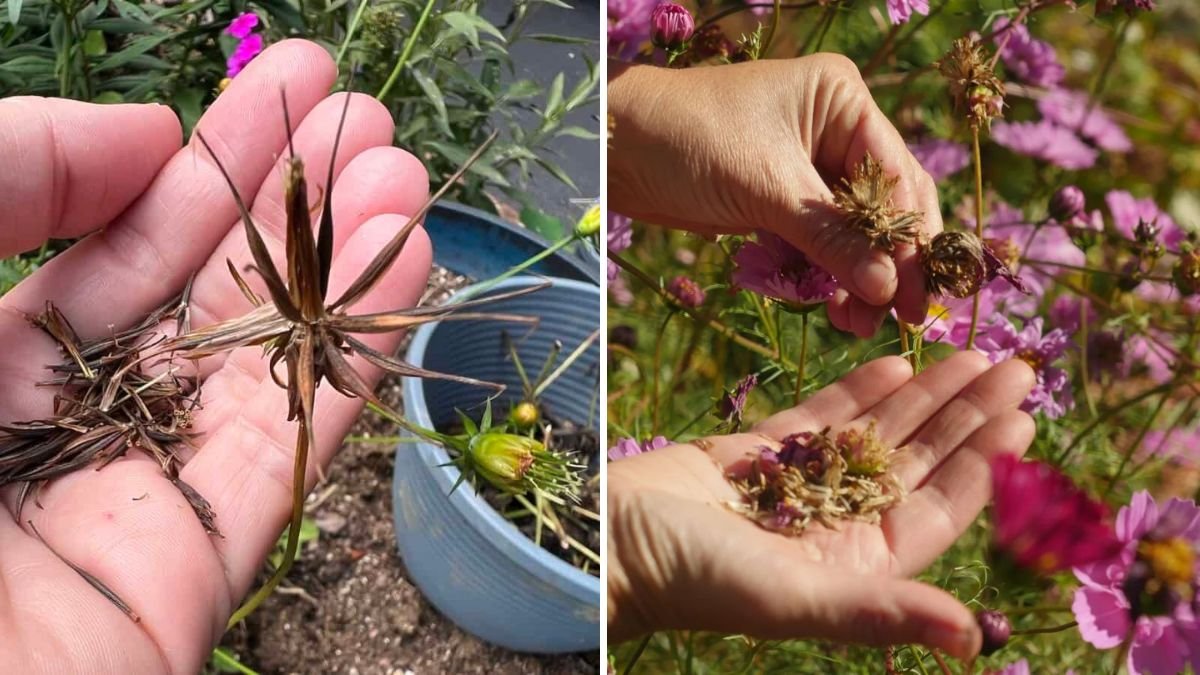Cosmos flowers (Cosmos bipinnatus and Cosmos sulphureus) are beloved annuals known for their delicate, daisy-like blooms, vibrant colors, and ability to attract pollinators such as bees and butterflies. One of the most rewarding aspects of growing cosmos is the opportunity to save seeds from year to year, allowing gardeners to enjoy endless gardens of these charming flowers without having to purchase seeds each season. Proper seed harvesting ensures healthy, viable seeds, supports sustainable gardening, and preserves favorite varieties. This article provides a comprehensive guide on harvesting cosmos seeds, including plant selection, seed collection, drying, storage, and planting strategies for an endless garden.
Why Harvest Cosmos Seeds?
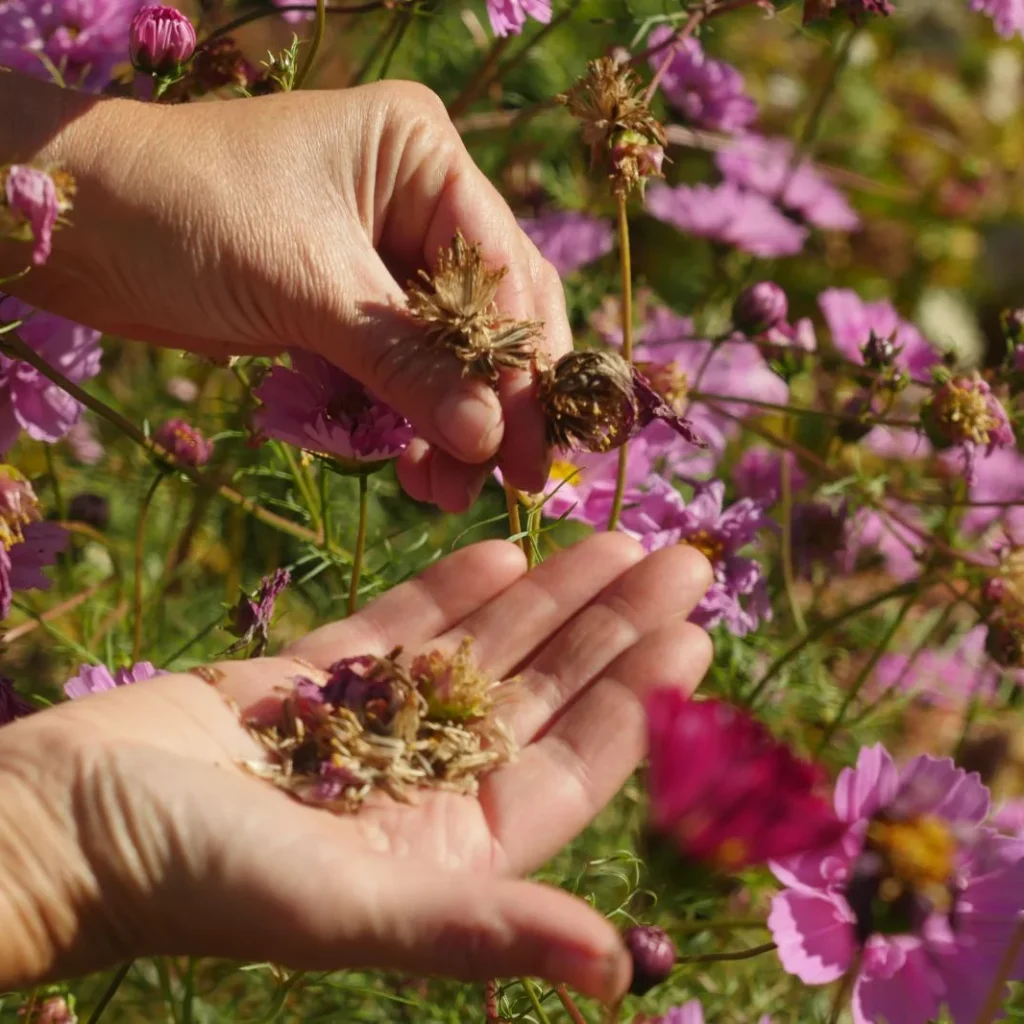
Saving cosmos seeds offers multiple benefits:
- Cost-Effective Gardening: Reduces the need to buy new seeds every season.
- Preserve Favorite Varieties: Maintain unique colors, heights, and bloom types.
- Sustainable Gardening: Encourages self-sufficiency and reduces environmental impact.
- Better Adaptation: Seeds collected from your garden are better suited to your local climate and soil.
- Educational Value: Provides insight into plant reproduction, pollination, and seasonal planning.
Step 1: Selecting the Right Cosmos Plants
Choosing healthy parent plants is essential for high-quality seed production.
Traits to Consider:
- Vibrant Blooms: Select flowers with vivid colors and robust form.
- Disease-Free: Avoid plants showing signs of mildew, rot, or pest damage.
- Open-Pollinated Varieties: Ideal for seed saving, as seeds from hybrid varieties may not produce true-to-type offspring.
- Strong Growth: Focus on plants that thrive in your garden conditions and attract pollinators, ensuring strong seed set.
Tips: Monitor your cosmos plants throughout the growing season and mark the best-performing flowers for seed collection later.
Step 2: Understanding Cosmos Seed Development
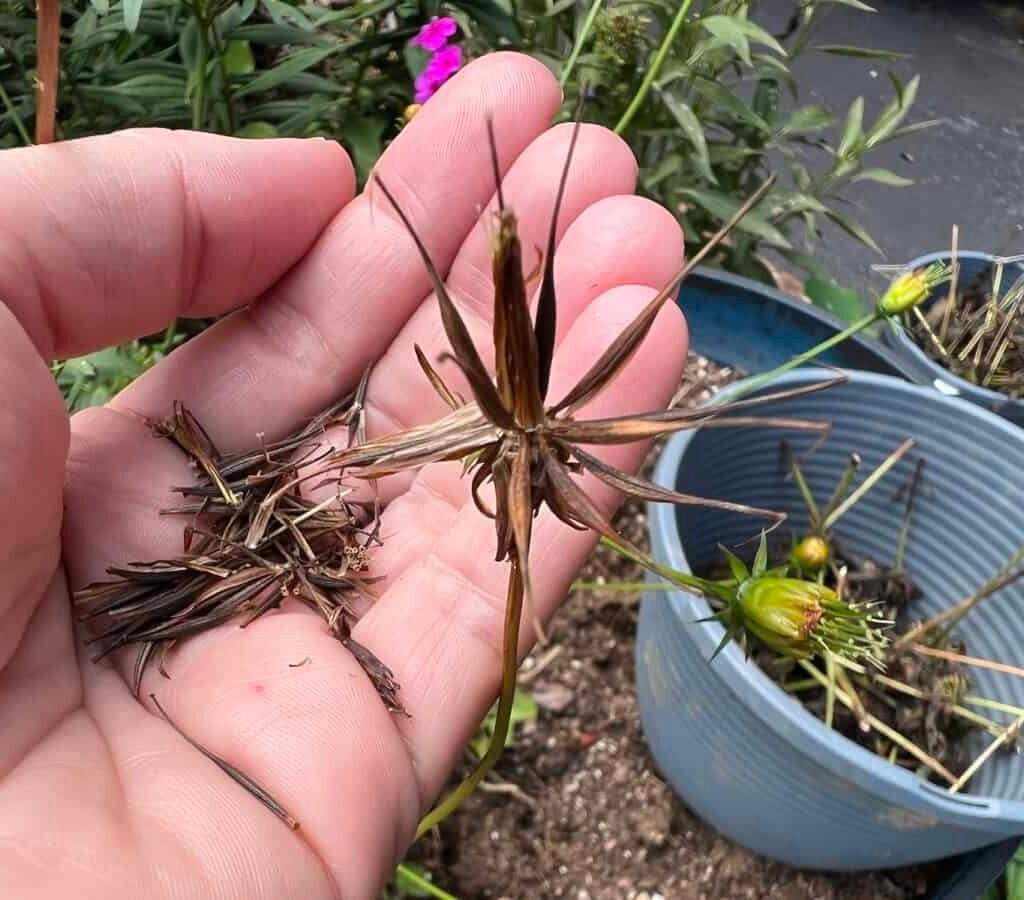
Timing is critical to ensure seeds are mature and viable.
Seed Formation:
- Cosmos seeds develop after the flower petals fade and the central disk forms.
- The seed head is located at the center of the flower and matures as the petals fall.
Signs of Seed Maturity:
- Petals Falling: Flowers lose their petals naturally.
- Seed Color: Seeds transition from green to dark brown or black, depending on the variety.
- Texture: Mature seeds feel firm and slightly rough; immature seeds are soft.
Best Harvest Time:
- Harvest seeds after the flower has completely dried on the plant but before strong winds or animals can dislodge them.
- This is usually late summer to early autumn, depending on your climate.
Step 3: Preparing for Seed Harvest
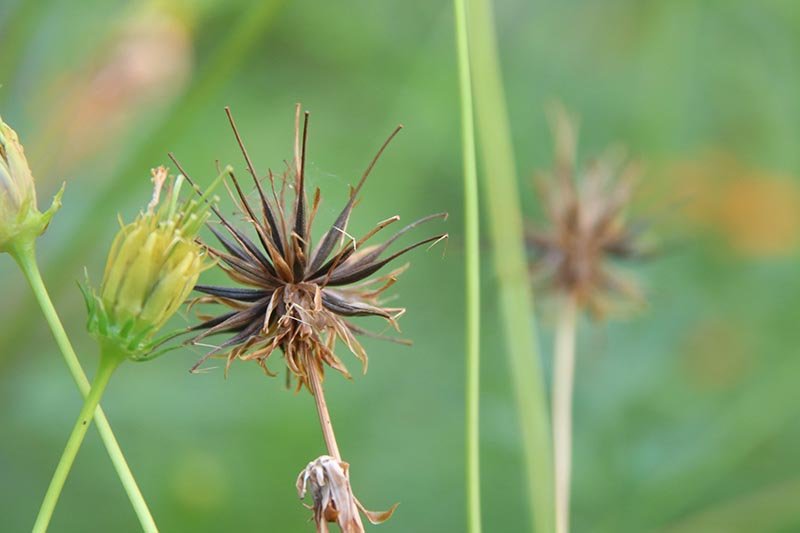
Before collecting seeds, gather the necessary tools and materials:
- Scissors or garden shears: For cutting seed heads cleanly.
- Paper bags or containers: To collect seed heads without crushing seeds.
- Gloves (optional): Protect hands from rough stems.
- Drying area: Prepare a well-ventilated, dark space for drying seeds.
Tips: Harvest on a dry, sunny day to reduce moisture, which can cause mold during storage.
Step 4: Harvesting Cosmos Seeds
Harvesting cosmos seeds requires careful handling to prevent damage:
Step 1: Cutting Seed Heads
- Cut the flower head with about 3–4 inches of stem attached.
- Hold the head gently to avoid crushing seeds.
Step 2: Protect Seeds During Collection
- Place the seed heads in a paper bag or container to prevent loss.
- Avoid handling seeds directly until they are fully dry.
Step 5: Drying Cosmos Seeds
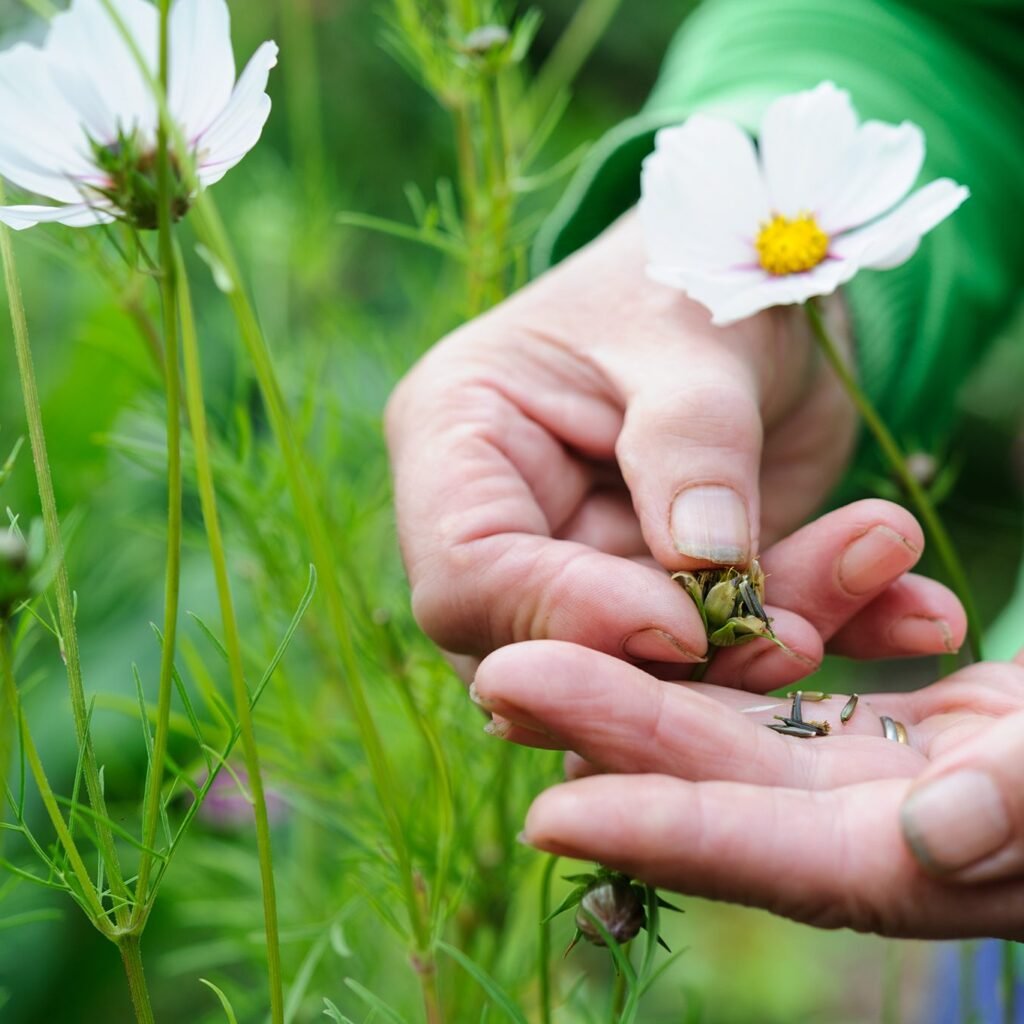
Proper drying is key to preserving seed viability.
Air Drying:
- Tie small bundles of seed heads with string and hang upside down in a dry, dark, and ventilated area.
- Allow 1–2 weeks for complete drying.
Alternative Drying:
- Spread seed heads on a tray lined with paper towels in a well-ventilated room.
- Avoid direct sunlight to preserve seed quality.
Tips: Seeds are fully dry when they can be easily removed from the seed head without sticking.
Step 6: Extracting Seeds from Seed Heads
Once the heads are dry:
- Gently rub the seed head between your fingers to release the seeds.
- Use a sieve to separate seeds from chaff and debris.
- Select plump, firm seeds and discard any that are shriveled or damaged.
Seed Anatomy: Cosmos seeds are long, narrow, and slightly curved with a pointed tip. Healthy seeds are firm, smooth, and dark in color.
Step 7: Storing Cosmos Seeds
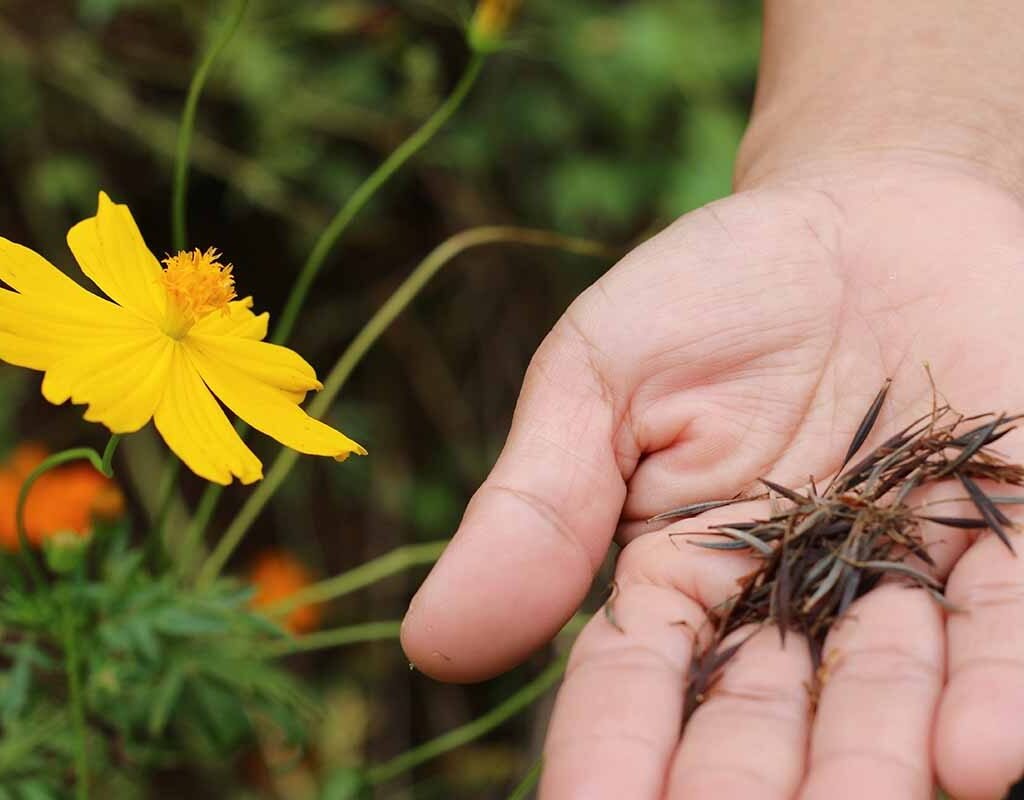
Proper storage ensures seeds remain viable for future planting:
Storage Containers:
- Glass jars with airtight lids
- Paper envelopes for short-term storage
- Small cloth bags
Storage Conditions:
- Cool, dry, and dark location (ideal: 40–50°F or 4–10°C)
- Avoid moisture to prevent mold or early germination
- Label containers with variety and collection date
Tips: Cosmos seeds remain viable for up to 3–4 years, though germination rates are highest within the first 2 years.
Step 8: Preparing Seeds for Planting
Before sowing:
- Optional pre-soaking: Soak seeds in lukewarm water for 2–4 hours to soften the seed coat and encourage germination.
- Check for any damaged seeds and remove them to ensure healthy seedlings.
Step 9: Planting Cosmos Seeds
Cosmos seeds are easy to grow and thrive in various conditions.
Steps:
- Sow seeds ¼–½ inch deep in well-draining soil.
- Space seeds 8–12 inches apart to allow airflow and strong growth.
- Water gently until seedlings emerge, usually within 7–14 days.
- Thin seedlings as needed to prevent overcrowding.
Care Tips:
- Provide full sunlight for best flowering.
- Fertilize lightly to avoid excessive foliage with fewer flowers.
- Deadhead spent blooms to prolong flowering and seed production.
Step 10: Tips for Continuous Cosmos Seed Saving
- Grow Multiple Varieties: Ensures a continuous and diverse bloom season.
- Isolate Varieties: Prevent cross-pollination to maintain true-to-type seeds.
- Monitor Plants: Only save seeds from strong, disease-free plants.
- Record Keeping: Track planting dates, bloom quality, and seed collection for future improvements.
- Succession Planting: Sow seeds periodically to have continuous flowering and seed harvests throughout the growing season.
Advantages of Harvesting Cosmos Seeds
- Endless Garden: Seeds from year to year ensure continuous blooms.
- Cost Savings: Reduces dependency on purchasing new seeds.
- Variety Preservation: Maintain your favorite flower colors and forms.
- Sustainable Gardening: Promotes eco-friendly, self-sufficient practices.
- Pollinator Support: Continuous blooms support bees, butterflies, and other beneficial insects.
Conclusion
Harvesting cosmos seeds is a rewarding practice that allows gardeners to enjoy endless gardens filled with vibrant flowers year after year. By selecting healthy plants, understanding seed maturity, carefully harvesting, drying properly, and storing seeds under ideal conditions, gardeners can maximize seed viability and flower quality. Cosmos seed saving not only ensures beautiful blooms for future seasons but also supports sustainable gardening, preserves favorite varieties, and enhances the overall health and productivity of your garden. With patience, attention, and consistent care, an endless garden of cosmos flowers can become a reality, providing color, charm, and ecological benefits for years to come.
